Combat ships. Cruisers. It didn't start with sakura
When it comes to the legion of Japanese light cruisers, start over. The beginning, that is, the first light cruisers, were two Tenryu-class cruisers. The predecessors who could claim the title of the first. Cruisers of the "Tikuma" class belonged to armored cruisers.
The first light cruisers appeared in accordance with the changed conditions naval concepts where destroyer flotillas began to play a very significant role in the composition of any fleet. The destroyers needed support ships, that is, leaders. Armored cruisers were not suitable for the role of destroyer defenders, since they did not have the proper speed.
They were to be replaced by new ships, faster. In general, the new type of ships was designed precisely based on the requirements for escorting destroyers and protecting them from small enemy ships.
The design of new cruisers began in 1915. Naturally, when working on the project, the Japanese designers looked towards the British ships, the project of the cruiser "Danae" was taken as a basis.
But then, for the sake of the concept of use, the appearance and content of the new ship began to change. The cruiser-leader of the destroyers had to move at a speed no less than the charges and at the appropriate range. Japanese destroyers have always differed in their range, so the leader had to match.
So it is no wonder that the final appearance of the Tenryu very much resembled the Kawakaze-class destroyers, which were designed in parallel, and the curved stem was taken from the Isokaze destroyer.
They also decided to use the machines from the destroyer. They were able to give the planned speed of 30 knots and provide the required range, as they were working on oil. This significantly saved weight, with the same cruising range required less oil than coal.
To ensure high speed, the hull was designed to be very narrow, which placed additional stress on the hull. The hull was divided into 15 compartments by watertight bulkheads. Longitudinal bulkheads and torpedo protection were missing, sacrificing weight savings. There was a double bottom only in the area of the artillery cellars and the engine room.
Reservation
American destroyers with their 102-mm caliber were considered the likely enemy of the Tenrou-class cruisers. The main mechanisms of the engine and boiler rooms were protected by an armored belt 4,27 m high and only 58,6 m long.
The armored deck had a thickness of 22 to 25,4 mm. The armored jacket was armored with 51 mm thick sheets, the main battery turrets were covered with 20 mm armor plates. The ammunition cellars were below the waterline, therefore they were not armored.
Power plant
To accelerate a cruiser with a displacement of 3 tons to the required 500 knots of design speed, three TZA with a total capacity of 33 hp were needed. The power plant was fully consistent with the installation of the destroyers of the Tina "Kawakaze".
TZA fed ten Kampon "RO GO" boilers with steam. Initially, it was planned to equip all ships with oil heating, but later, due to a lack of oil, this idea was abandoned. As a result, on the Tenryu type the configuration of the boilers was as follows: 6 large boilers and 2 small boilers for oil heating and 2 small boilers for mixed heating.
Boiler room for three compartments.
In the first, two small mixed fuel boilers operated through chimney # 1.
In the second one, two small boilers for oil were installed, which were also brought out to the chimney # 1 and two large boilers, which were taken out through the chimney # 2.
In the third boiler room there were four large boilers, which were led out to chimneys # 2 and # 3.
According to the project, the ships were supposed to hold 920 tons of oil and 150 tons of coal in fuel storage. The estimated cruising range was 6 miles at 000 knots, 10 miles at 5 knots, and 000 miles at 14 knots.
Crew and habitability
The crew of the ships consisted of 337 people, including 33 officers. Habitability conditions were at the usual level for Japanese ships, that is, below the average by world standards.
The officers' quarters were located on the lower deck aft of the ship, behind the engine room. One officer had 6,7 sq. m. living space. The sailors were stationed in the bow of the ship in front of the boiler rooms, on the upper and lower decks. One sailor had 1,38 sq. m. per person.
The lighting and ventilation of the living quarters was natural, through the windows.
weaponry
The main caliber of the cruisers consisted of 140-mm single-gun mounts, two in the bow and stern of the ship.
The guns were guided manually, the speed of horizontal and vertical guidance was 8 deg / s, the elevation angles were in the range from -5 ° to + 20 °.
The flight range of a projectile weighing 38 kg at a maximum elevation angle reached 15,8 km. The guns were loaded manually, it was possible to load at any angle of elevation of the barrel. The supply of shells and charges was also carried out manually, using a system of mechanical chain hoists.
The combat rate of fire thus depended 100% on the gun servants and was up to 6 rounds per minute.
The ammunition capacity is 110 rounds per barrel, for a total of 440 rounds.
Auxiliary and anti-aircraft weapons
Anti-aircraft armament consisted of one 80-mm gun.
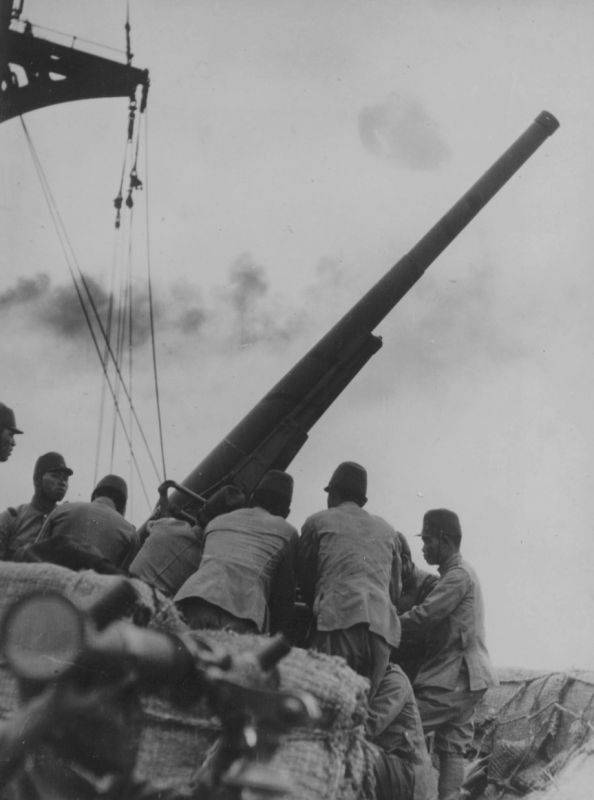
The gun fired a projectile weighing 6 kg at a distance of 7,2 m at an elevation angle of 75 degrees and 10,5 km at an elevation angle of 45 degrees. The rate of fire is 13-20 rounds per minute. All processes were carried out manually, respectively, the rate of fire depended on the training of the servants.
Ammunition consisted of 220 rounds.
The short-range air defense was provided by two 6,5-mm anti-aircraft machine guns, which were installed between chimneys No. 2 and No. 3. This machine was a Japanese copy of the 1900 French Hotchkiss.
In general, anti-aircraft armament was quite decent for 1915. Of course, the ships entered the Second World War with different weapons.
Mine torpedo armament
Since the cruiser was just a beefy destroyer, and the then concept involved the installation of torpedo tubes on everything that floats, accordingly, Tenryu was no exception.
Two three-pipe rotary torpedo tubes of 533-mm caliber were placed in the center plane of the ship and could fire a salvo of six torpedoes to any side. Ammunition consisted of 12 torpedoes.
In addition, the Tenryu had equipment for laying rail-type mines on both sides of the stern superstructure. Ammunition consisted of 30-48 mines of various types.
Compared to her classmates (British "Danae", "Caledon"), then the Japanese cruiser was more a destroyer leader than a full-fledged cruiser. The Japanese ships were faster, the cruising range was about the same as the British light cruisers, but in terms of armament, the Japanese ships were inferior and inferior significantly. Still, 6 x 152 mm versus 4 x 140 mm is very significant.
So if Tenryu was a danger to anyone, it was for destroyers and destroyers. Which was confirmed by their service during the war.
Combat application
"Tenryu"
Laid down on March 11, 1918, launched on May 26, 1919, commissioned on November 20, 1919.
Before the outbreak of World War II, Tenryu went through several modifications. They mainly concerned anti-aircraft weapons. First, the 6,5-mm machine guns were replaced with 13,2-mm Type 93, in December 1940, instead of machine guns, two double-barreled 25-mm Type 96 assault rifles were installed, and in February 1942, two more double-barreled 25-mm assault rifles were installed.
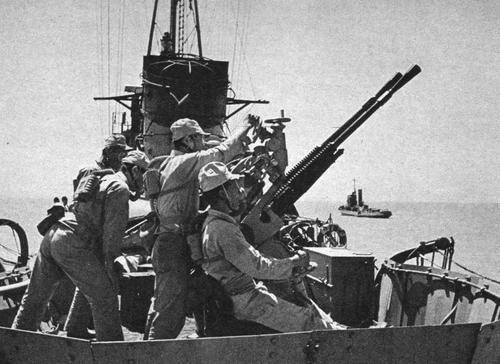
On the whole, of course, unsatisfactory.
Baptism of fire "Tenryu" took in the battle of Shanghai in 1932, participating in the Second Sino-Japanese War. There was a landing, which was covered by the battle cruiser "Kirishima", light cruisers "Tenryu" and "Yura" and 4 destroyers. This was enough to drive off the ships of the Shanghai fleet, to ensure the landing of a large assault force and the work of the aircraft carriers "Kaga", "Jose" and the seaplane transport "Notoro", whose planes bombed Shanghai.
In 1938, the cruiser was again off the coast of China, covering the landing forces and blockading the coast. Then the ship was used as a training ship.
At the end of 1940, Tenrou underwent modernization, during which the mixed boilers were replaced with oil ones, an armored roof was installed on the bridge and two 25-mm anti-aircraft guns were added.
The cruiser met the beginning of World War II for Japan at sea, as part of a squadron of ships going to capture Wake Island. The first assault was repulsed, but as a result of the second, on December 20, 1941, Wake was captured.
In 1942, Tenrou covered landings and transport convoys to the islands of New Ireland, New Britain, the Solomon Islands and New Guinea.
In late January - early February 1942, IJN Tenryū escorted landing transports during the invasion of New Ireland and New Britain, and then was sent to patrol the Caroline Islands region.
On August 9, 1942, Tenru took part in a night battle off Savo Island, during which seven Japanese cruisers (5 heavy and 2 light), accompanied by one destroyer, collided with eight American cruisers (6 heavy and 2 light) and 15 destroyers.
The battle ended with the complete defeat of the American squadron. Four American heavy cruisers were sunk, one cruiser and two destroyers were badly damaged. The Tenrou account was credited with the sinking of the cruiser Quincy by two torpedoes and participation in the sinking of the heavy cruisers Astoria and Canberra. The response fire of the cruiser "Chicago" caused minor damage, 23 crew members were killed.
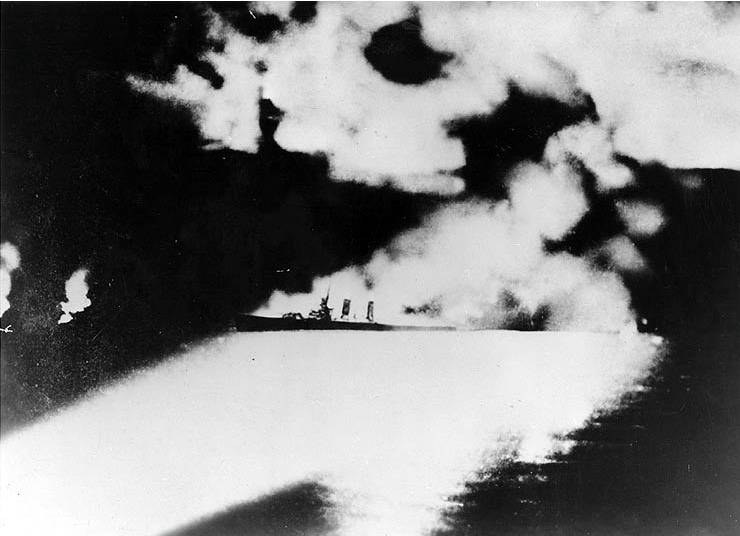
The cruiser "Quincy" shortly before its death in the beams of the searchlights of Japanese ships
More than a decent result.
Further, the cruiser again took part in operations in the New Guinea area, covered the landings, evacuated the paratroopers and sank a British transport with a displacement of 3 tons.
On October 2, 1942, while at the pier in Rabaul, Tenru received a bomb from an American B-17 bomber. Thirty crew members were killed, but the ship was quickly repaired, and he joined the so-called "Tokyo Express", a convoy from Rabaul to Guadalcanal, which constantly transported various goods to the island.
Covering the convoy, the cruiser repeatedly engaged in battles with American aircraft and torpedo boats, but without any damage.
The Tenrou also took part in the raid on Henderson Field, an American airfield on Guadalcanal in November 1942. The raid frankly failed, aviation the Americans drove away the Japanese ships, but the Tenryu remained intact again. The cruiser was much more fortunate than the Kinugas colleague, which the American torpedo bombers sent to the bottom.
On December 16, 1942, Tenrou and 4 destroyers sailed from Shortland to New Guinea for the landing. On December 18, the landing was successfully landed, the ships set off on their way back. Tenryu was escorting an empty transport, which was attacked by the American submarine Albacore.
The boat fired three torpedoes into the transport, one of which caught up with the Tenryu and shattered its stern. The engine room was flooded, the cruiser lost speed and power supply, which caused the pumps to pump out water. And to top it all off, a fire broke out, which also could not be extinguished due to inoperative pumps. The fire, however, went out when the cruiser began to submerge, but this was no longer significant.
At 23.20 on December 19, 1942, the Tenryu sank. 23 crew members were killed, the rest were picked up by the group's destroyers.
"Tatsuta"
Laid down on May 29, 1918, launched on May 31, 1919, commissioned on May 31, 1919.
The performance characteristics and armament did not differ from the first ship of the series; in the process of modernization, the 6,5-mm machine guns were first replaced with 13,2-mm machine guns, and then with 25-mm anti-aircraft guns, the number of which was brought to ten.
He began his combat service in September 1924, guarding military shipments to China. Participated in the exercises of the United Fleet. During an exercise on March 19, 1924, he sank submarine No. 43 with a ram.
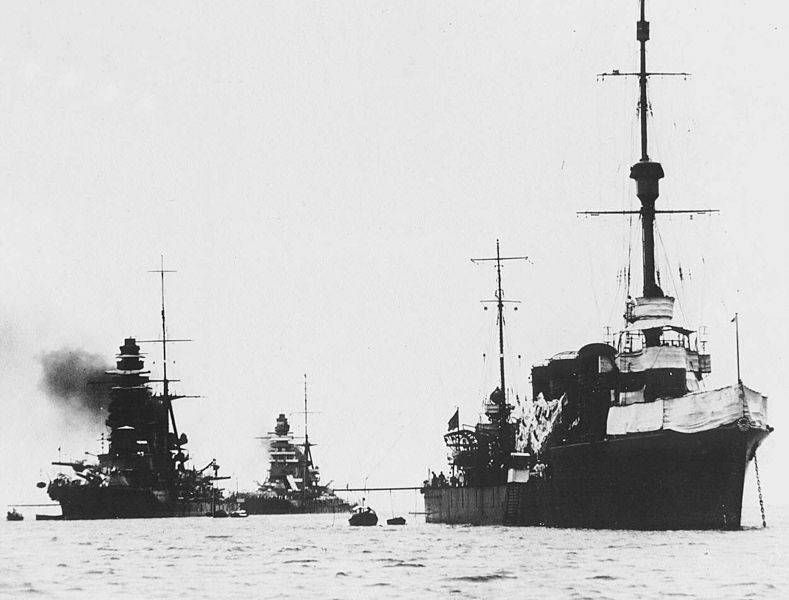
"Tatsuta" against the background of "Nagato" and "Mutsu"
In March 1934, operating in the area of the Chinese coast as part of the Second Sino-Japanese War, he took part in the rescue of the wrecked destroyer Tomozuru.
In 1938 he took part in the blockade of Chinese ports.
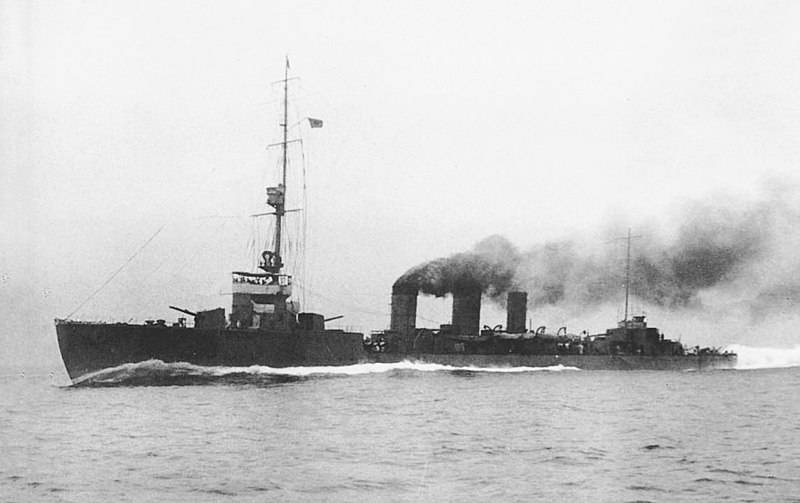
After the outbreak of World War II, the Tatsuta took part in the capture of Wake Island. After the success of the operation, the cruiser was transferred to Kwajalein, where she became part of the Southern Task Force.
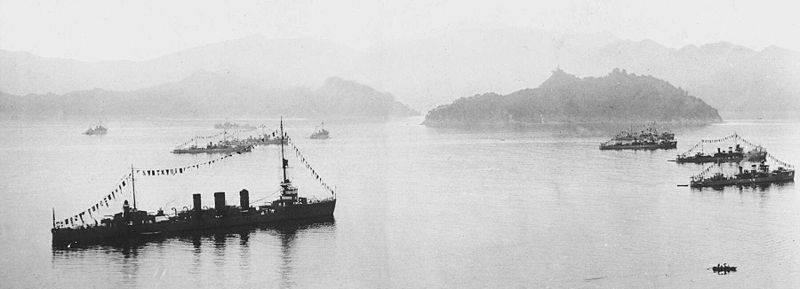
"Tatsuta" and the destroyers of the 2nd flotilla
Covered the landing of troops on Rabaul, New Britain, Lae, Salamua, New Guinea. Participated in the invasion of Port Moresby, the occupation of Bougainville, Shortland, Keith, Manus and the Admiralty Islands. Convoy transports on the Tokyo Express to Guadalcanal from Rabaul.
Then there was the landing of Japanese troops in New Guinea, on the islands of Boone, Gudenaf, Taupota, on the coast of Milne Bay. She shelled the coast of the island of Labi, supporting the landing of troops on the island.
In September 1942, participating in the operation to evacuate the landing from Boone Island, he sank the British transport Anshan.
In 1943, after a lengthy renovation, the cruiser was based on Truk Atoll, from where she accompanied transports with cargo to the island of Ponape.
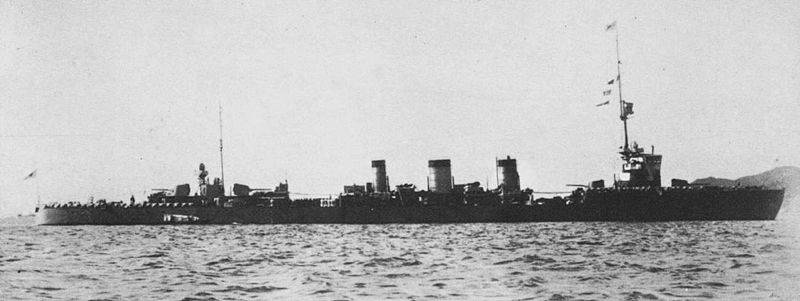
The year 1944 was spent in escorting transports to Amoy and the Mariana Islands.
On March 12, 1944, the Tatsuta departed from Yokosuka, escorting a convoy of five cargo transports to Saipan. In the area of the island of Hachijo-jima (Izu archipelago), the convoy was attacked by the American submarine Sand Lance, which fired six torpedoes at the convoy.
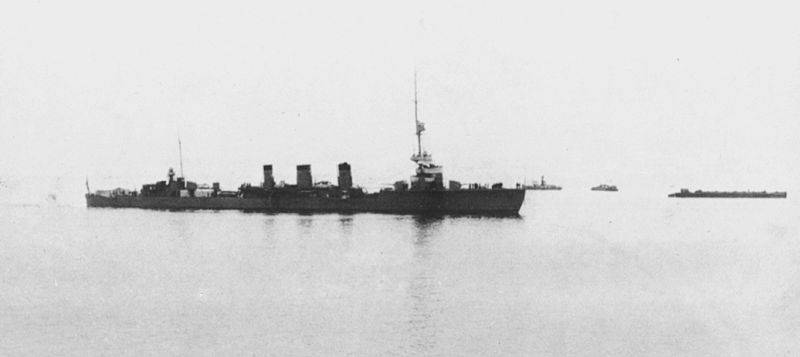
Two torpedoes hit the stern of the Tatsuta and after 20 minutes the cruiser sank. 45 crew members were killed.
What can you summarize about these ships? Only that they were pretty good ships. Fast, agile, with a good range. The weapons were frankly weak, but, as practice showed, the survivability of the cruisers was even worse. One torpedo for a cruiser is not enough, but Tenryu was enough. And two torpedoes left no chance for Tatsuta.
In fact, they were rather fat destroyer leaders than full-fledged cruisers. So, in principle, the ending is quite natural.
However, it should be said that "Tenryu" became the starting point for the further development of the class of Japanese light cruisers. And along the way, Japanese designers have created ships, which we will talk about further. They were worth it.
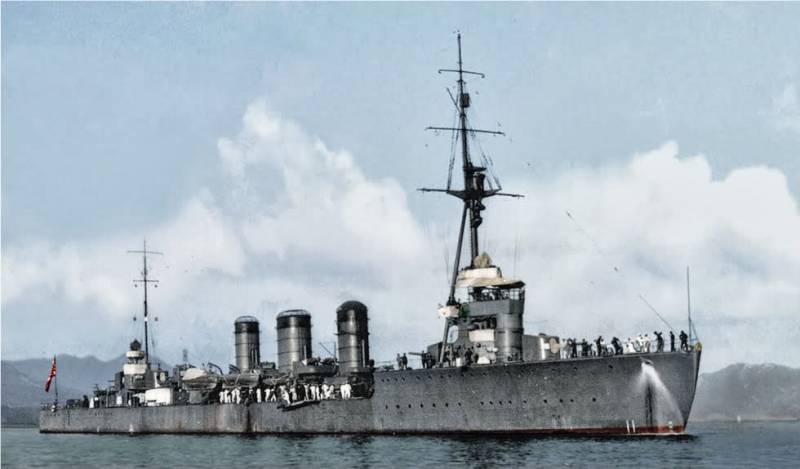
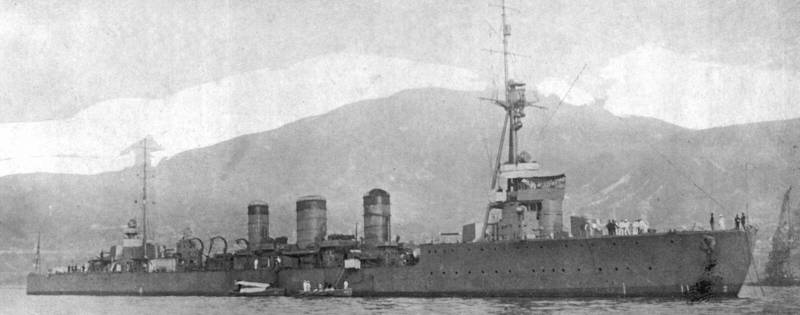
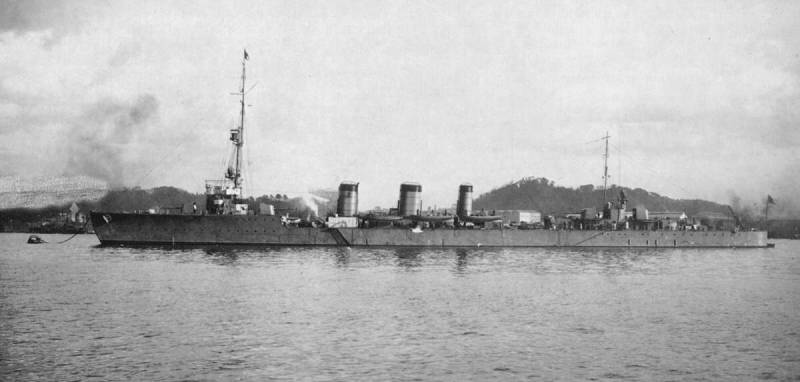
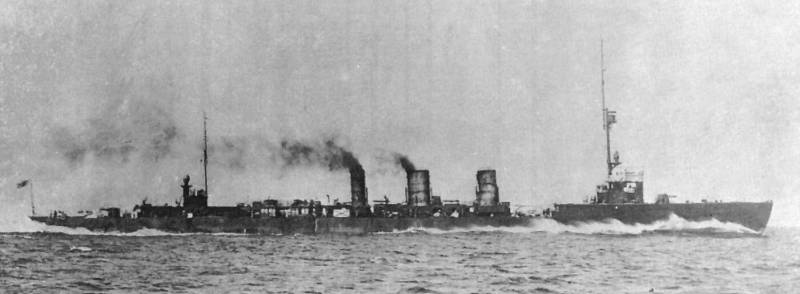
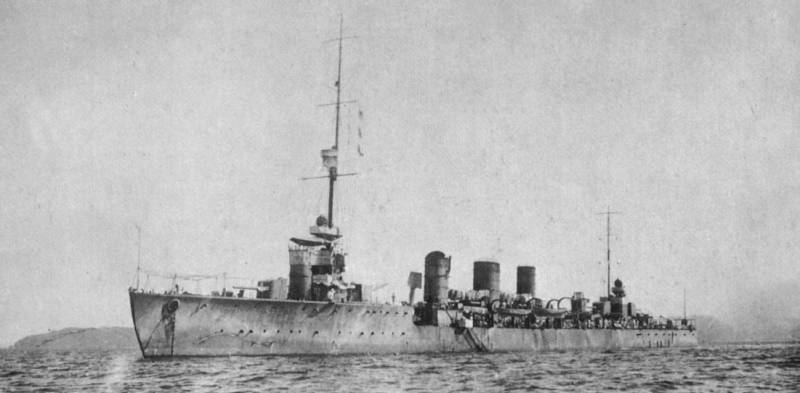
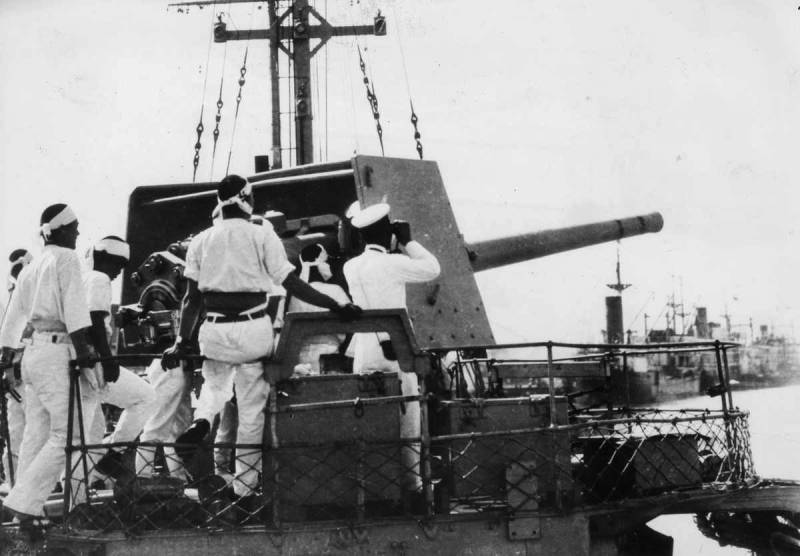
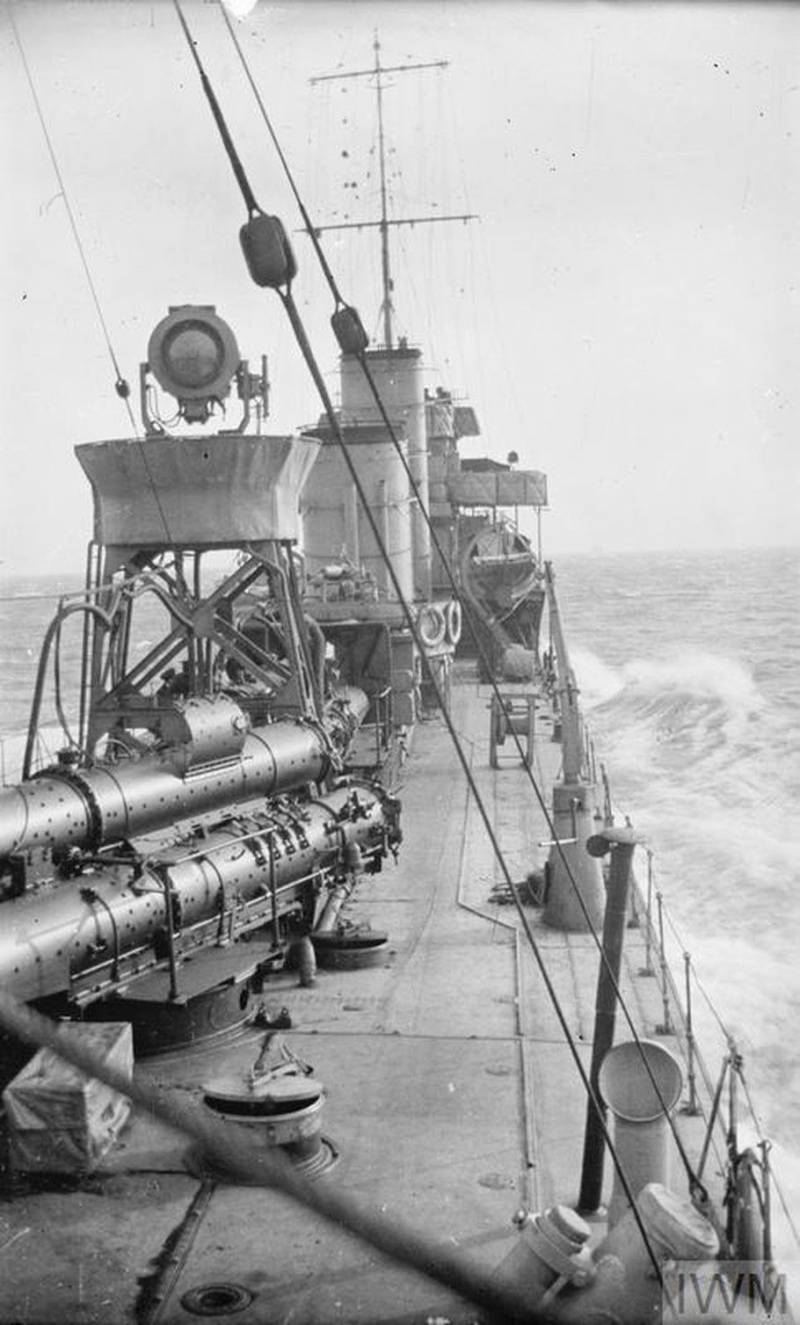
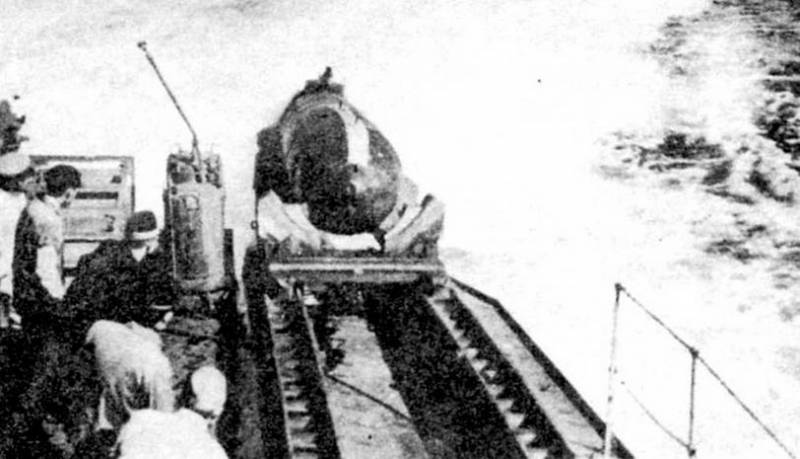
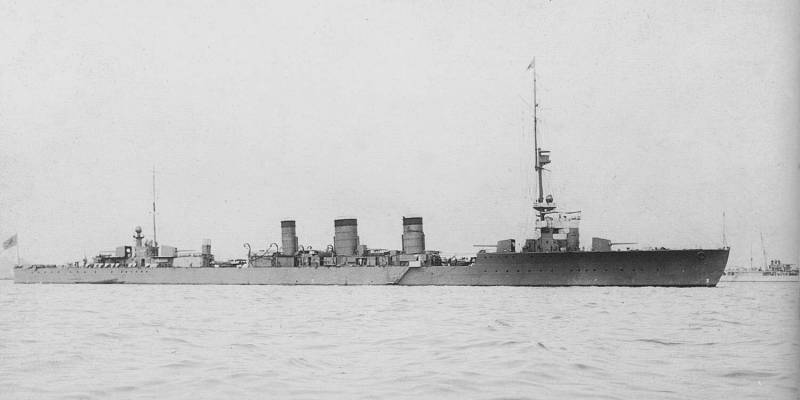
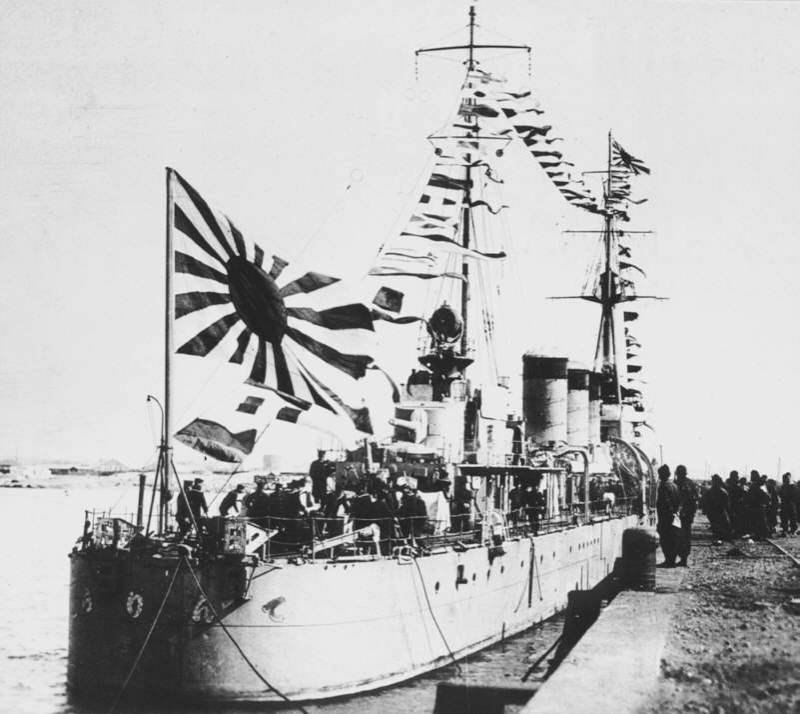
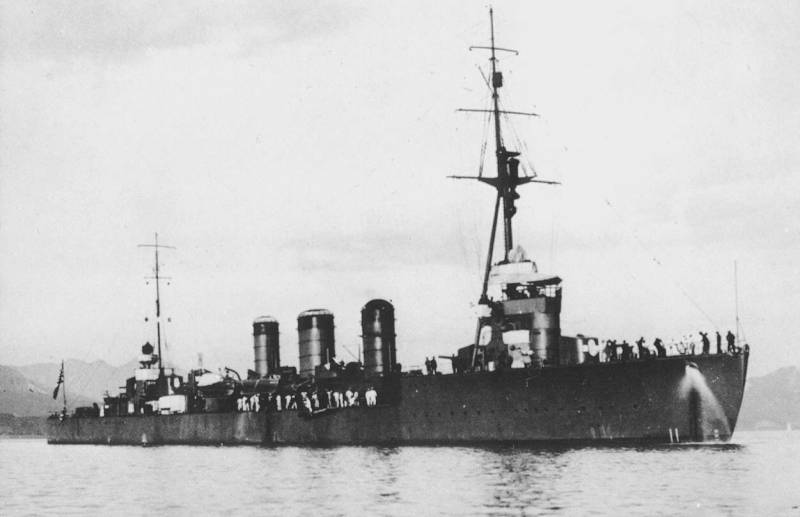
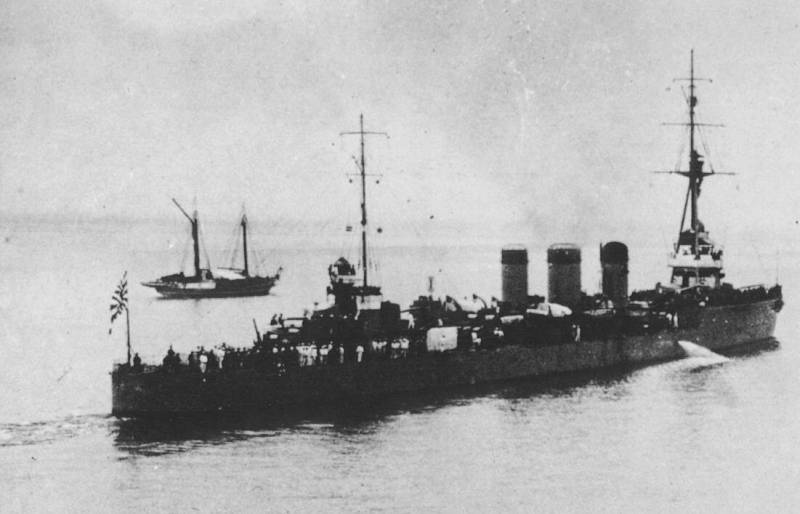
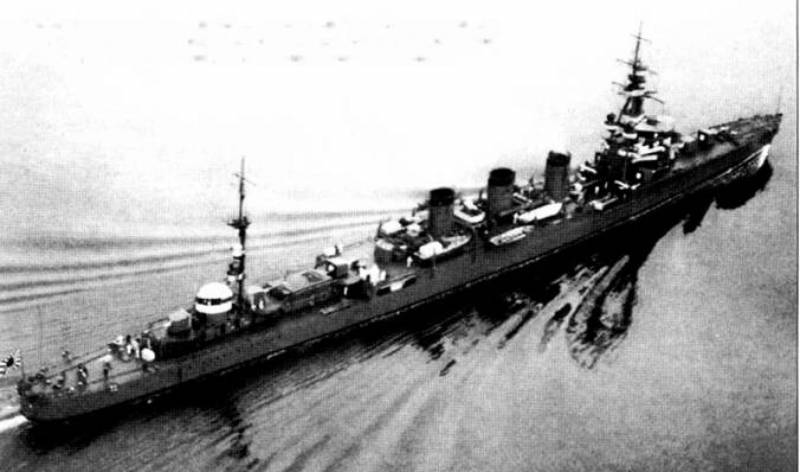
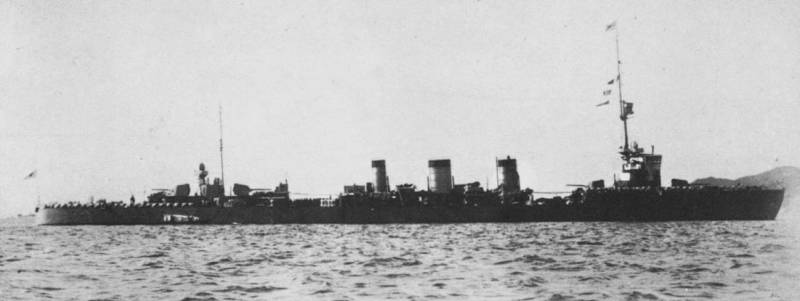
Information